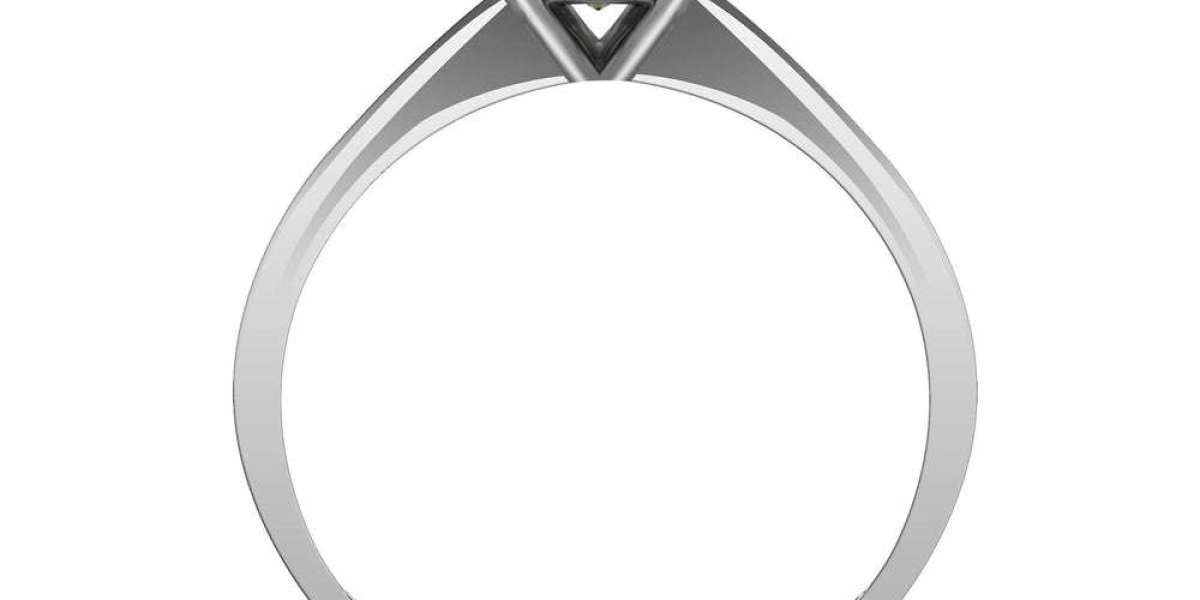A diamond engagement ring is more than just a piece of jewelry—it's a timeless symbol of love, commitment, and the start of a shared journey. Whether you’re shopping for the perfect ring for your partner or simply exploring your options, understanding the nuances of diamond engagement rings can help you make an informed, meaningful choice. In this guide, we’ll walk you through everything you need to know about diamond engagement rings—from the history and symbolism to the different styles, diamond quality, and how to choose the perfect ring.
The History and Symbolism of Diamond Engagement Rings
Diamond engagement rings have a rich history that dates back to the 15th century. The tradition began in 1477 when Archduke Maximilian of Austria gave Mary of Burgundy a diamond ring to symbolize their betrothal. Since then, diamonds have come to represent enduring love, purity, and strength.
In the modern era, the popularity of diamond engagement rings surged in the 20th century, thanks to successful marketing campaigns by De Beers. The slogan “A Diamond is Forever” cemented the idea that a diamond ring is the ultimate expression of lasting love.
Understanding the 4Cs of Diamonds
When buying a diamond engagement ring, one of the most important concepts to understand is the 4Cs: Cut, Color, Clarity, and Carat. These factors determine the quality and value of a diamond.
1. Cut
The cut refers to how well a diamond’s facets interact with light. It affects the sparkle and brilliance of the stone. Common cuts include:
Round Brilliant
Princess
Cushion
Oval
Emerald
Pear
A well-cut diamond will appear more dazzling and lively, regardless of its size.
2. Color
Diamonds are graded on a scale from D (colorless) to Z (light yellow or brown). The closer to D, the more valuable the stone. However, slightly lower color grades like G or H can still look stunning, especially in the right setting.
3. Clarity
Clarity measures the number and size of inclusions or blemishes within the diamond. Grades range from Flawless (FL) to Included (I1, I2, I3). Most inclusions are microscopic and not visible to the naked eye, so opting for a diamond with VS1 or SI1 clarity can offer good value without compromising appearance.
4. Carat
Carat weight measures the size of the diamond. While larger diamonds tend to be more expensive, factors like cut and setting can greatly enhance the visual size and appeal of a smaller stone.
Choosing the Right Diamond Shape
The shape of the diamond plays a major role in the ring’s overall aesthetic. Here are some of the most popular diamond shapes:
Round Brilliant: Classic, timeless, and known for maximum sparkle.
Princess Cut: Square and modern, with sharp lines and brilliance.
Cushion Cut: Romantic and vintage-inspired with rounded corners.
Oval Cut: Elegant and elongating on the finger.
Emerald Cut: Sophisticated with step cuts that highlight clarity.
Pear Cut: Unique and graceful with a teardrop silhouette.
Marquise Cut: Bold and striking, ideal for making fingers look longer.
Your choice of shape should reflect your partner’s personal style and preference.
Popular Engagement Ring Settings
The setting of the ring not only holds the diamond in place but also defines the overall design and style. Here are some of the most popular settings:
1. Solitaire
A classic and timeless choice, the solitaire features a single diamond on a plain band. It allows the stone to take center stage.
2. Halo
This setting surrounds the center diamond with a ring of smaller diamonds, enhancing the sparkle and perceived size.
3. Pavé
Tiny diamonds are set closely together along the band, adding extra sparkle and elegance.
4. Three-Stone
Symbolizing the past, present, and future, this setting features one center stone flanked by two side stones.
5. Bezel
A sleek and modern setting where the diamond is surrounded by a metal rim. It offers extra protection and a minimalist look.
6. Vintage
Inspired by antique designs, vintage settings often include intricate detailing like milgrain and filigree.
Metals for Diamond Engagement Rings
The choice of metal affects both the appearance and durability of the ring. Popular options include:
Platinum: Durable, hypoallergenic, and naturally white. Ideal for active lifestyles.
White Gold: A more affordable alternative to platinum, coated in rhodium for a bright finish.
Yellow Gold: Classic and warm, often chosen for its timeless appeal.
Rose Gold: Romantic and modern, with a soft pink hue that flatters many skin tones.
Each metal complements diamonds differently, so consider what suits your partner’s skin tone and style preferences.
Customizing Your Engagement Ring
Custom engagement rings offer a unique opportunity to create a one-of-a-kind piece that tells your love story. From choosing the diamond and setting to adding personal touches like engravings or colored gemstones, customization ensures the ring reflects your partner’s personality and your shared journey.
Working with a jeweler allows you to select everything from the band style to the prongs, making sure every detail aligns with your vision.
Ethical and Sustainable Options
As consumers become more environmentally conscious, ethical sourcing has become a major factor in ring shopping. Here are two options to consider:
Conflict-Free Diamonds: Ensure your diamond is certified conflict-free by checking for the Kimberley Process certification.
Lab-Grown Diamonds: Environmentally friendly and typically more affordable, lab-grown diamonds offer the same physical and chemical properties as natural diamonds.
Many jewelers now specialize in ethically sourced or lab-created diamonds, offering peace of mind and sustainability.
How Much Should You Spend?
The old rule of spending two to three months’ salary on an engagement ring is outdated. Instead, focus on your budget and prioritize the elements that matter most to you. Whether it’s a larger carat weight or a higher quality cut, balance is key.
Consider financing options, payment plans, or even upgrading later in life. The best ring is one that holds meaning—not just monetary value.
Shopping Tips for Diamond Engagement Rings
Do Your Research: Understand the 4Cs and decide which factors are most important to you.
Set a Budget: Know what you’re comfortable spending before shopping.
Choose a Reputable Jeweler: Look for certifications, return policies, and reviews.
Get Certification: Ensure your diamond comes with a grading report from a recognized lab like GIA or IGI.
Compare Options: Shop around to see different styles and prices before making a decision.
Final Thoughts
A diamond engagement ring is a once-in-a-lifetime purchase—one that represents your deepest emotions and commitment. With so many styles, cuts, and options available, the process can feel overwhelming. But by educating yourself on the fundamentals, identifying what matters most to you, and working with a trusted jeweler, you’ll find the perfect ring that captures your love story.
Whether you're choosing a classic solitaire, a sparkling halo, or a custom-designed masterpiece, the right engagement ring is one that resonates with both the heart and the eye.



